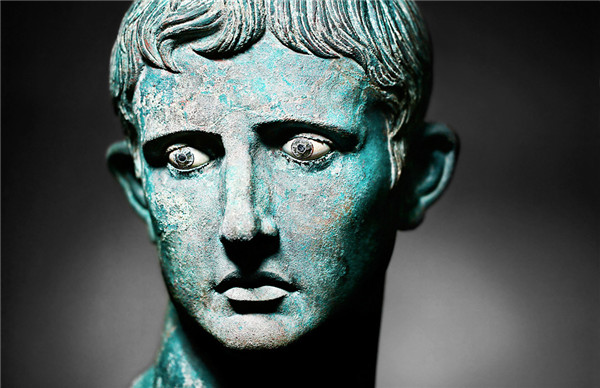 |
|
A photo of a statue of the first Roman emperor, Gaius Octavius Augustus, courtesy of Olivier Roller. [Photo provided to chinadaily.com.cn] |
Roller often requires his subjects to put down all their electronics; he gives incessant orders, and becomes abruptly silent or makes a silly joke out of the blue – giving them no time to think, but to "focus on what's happening right here and right now", he said.
In return, Roller he himself also focuses on the person sitting across him so attentively that he feels exhausted after every photo session.
"It's like a guy who runs 100 meters in 10 seconds. As a photographer I do the same thing, you try to get what they have inside of them in 10 seconds."
Roller once described his job as "besieging a fortress and finally conquering it".
Yet, Roller said, while the powerful are sometimes hard to conquer", they are not the most difficult.
In 2013, the Louvre in Paris commissioned Roller to take a set of portraits of the museum's statues of Roman emperors and Greek gods.
It was not an easy task, given the many existing good photos. In fact, the goal of producing pictures in a way that results in something more than good looking photos seems more daunting.
To make it happen, Roller said he spent months with the statues to make them really come alive".
My assistant tells me that sometimes I'm crying at the statue, ‘Open your eyes, please open your eyes!"
In those pictures, Roller captured what is covered under the name of power, be it the hollow, dreadful eyes of Mors, the Roman personification of death, the feminine face of the First Roman Emperor Gaius Octavius Augustus or the red alluring lips of Eros, the Greek god of love.
Roller said that by spending time and communicating with the statues, he felt he had a real person in front of him, and that's how it was possible for him to make the pictures.